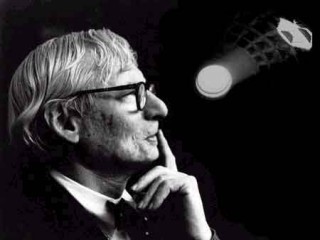
Louis Kahn biography
Date of birth : 1901-02-20
Date of death : 1974-03-17
Birthplace : Osel, Estonia, Russian Empire
Nationality : American
Category : Arhitecture and Engineering
Last modified : 2012-01-18
Credited as : architect, philosopher, Louis I. Kahn Archive
0 votes so far
His best known works, located in the United States, India, and Bangladesh, were produced in the last two decades of his life. They reveal an integration of structure, a reverence for materials and light, a devotion to archetypal geometry, and a profound concern for humanistic values.
Born in 1901 on the Baltic island of Osel, Louis Isadore Kahn's family emigrated to Philadelphia, Pennsylvania, in 1905, where Louis Isadore Kahn lived the rest of his life. Trained in the manner of the Ecole des Beaux Arts under Paul Philippe Cret, Louis Isadore Kahn graduated from the University of Pennsylvania School of Fine Arts in 1924.
Among his first professional experiences was the 1926 Philadelphia Sesquicentennial Exhibition. In the following years Louis Isadore Kahn worked in the offices of Philadelphia's leading architects, Paul Cret (1929-1930) and Zantzinger, Borie and Medary (1930-1932). During the lean years of the 1930s, Louis Isadore Kahn was devoted to the study of modern architecture and housing in particular. Louis I. Kahn undertook housing studies for the Architectural Research Group (1932-1933), a short-lived organization Louis Isadore Kahn helped to establish, and for the Philadelphia City Planning Commission.
Kahn's work, like that of Eero Saarinen, Frei Otto, and others who broke with the International Style, was controversial during his lifetime. However, his work was reviewed more favourably by a new generation of critics, who declared him one of the most original and important architects of the 20th century.
The Louis I. Kahn Archive, 7 vol. (1987), contains drawings, sketches, and blueprints. Collections of published and previously unpublished writings and lectures are What Will Be Has Always Been (1986), edited by Richard Saul Wurman, and Louis I. Kahn (1991), edited by Alessandra Latour.
















